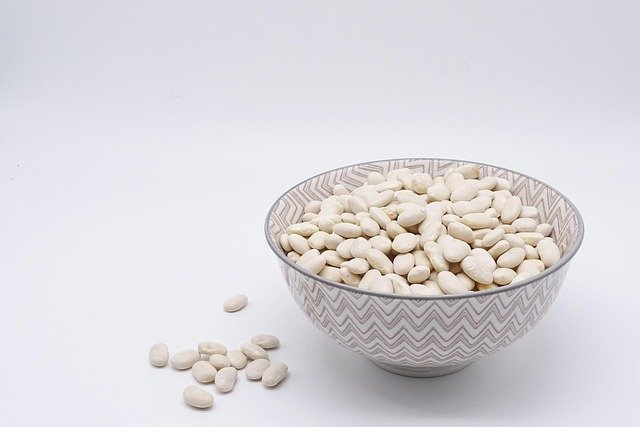Mycoprotein: The Sustainable Protein Revolution
Imagine a protein source that's not only nutritious but also eco-friendly, versatile, and capable of mimicking the texture of meat. Enter mycoprotein, a revolutionary food ingredient that's reshaping our approach to sustainable nutrition. But what exactly is this fungal-based protein, and how could it transform our diets and the planet?

The Fungal Foundations of Mycoprotein
Mycoprotein, at its core, is a protein derived from fungi, specifically from a microorganism called Fusarium venenatum. This filamentous fungus was discovered in the 1960s by British scientists searching for new protein sources to address global food shortages. After extensive research and development, mycoprotein was approved for human consumption in the 1980s and has since gained popularity as a meat alternative.
The production of mycoprotein involves a fermentation process similar to that used in brewing beer or making yogurt. The Fusarium venenatum is cultivated in large, sterile fermentation tanks, where it’s fed a mixture of glucose, minerals, and other nutrients. As the fungus grows, it forms long, fibrous strands that resemble muscle fibers, giving mycoprotein its meat-like texture.
Nutritional Powerhouse
Mycoprotein boasts an impressive nutritional profile that rivals, and in some cases surpasses, that of animal-based proteins. It’s a complete protein, containing all nine essential amino acids that the human body cannot produce on its own. This makes it an excellent option for vegetarians, vegans, and anyone looking to diversify their protein sources.
One of the standout features of mycoprotein is its high fiber content. Unlike animal proteins, which contain no fiber, mycoprotein is rich in both soluble and insoluble fiber. This contributes to improved digestive health, better blood sugar control, and increased satiety, potentially aiding in weight management.
Mycoprotein is also low in fat, particularly saturated fat, and contains no cholesterol. This makes it an attractive option for those looking to maintain heart health or manage their weight. Additionally, it’s a good source of vitamins and minerals, including zinc, selenium, and B vitamins, further enhancing its nutritional value.
Environmental Impact and Sustainability
In an era where the environmental impact of our food choices is under scrutiny, mycoprotein stands out as a sustainable alternative to traditional protein sources. The production of mycoprotein requires significantly less land, water, and energy compared to livestock farming. This efficiency translates to a much lower carbon footprint, making mycoprotein an environmentally friendly protein option.
Research has shown that the greenhouse gas emissions associated with mycoprotein production are about 10 times lower than those of beef and about 20 times lower than lamb. Furthermore, the water usage in mycoprotein production is a fraction of what’s required for animal agriculture, addressing concerns about water scarcity in many parts of the world.
The sustainability benefits of mycoprotein extend beyond its production. As a meat alternative, it has the potential to reduce the demand for livestock farming, which is a significant contributor to deforestation, biodiversity loss, and water pollution. By offering a viable alternative to meat, mycoprotein could play a crucial role in mitigating the environmental impact of our food system.
Culinary Applications and Consumer Acceptance
One of the most exciting aspects of mycoprotein is its versatility in the kitchen. Its fibrous structure allows it to mimic the texture of various meats, making it an excellent base for vegetarian and vegan dishes. From burgers and nuggets to sausages and ground meat substitutes, mycoprotein can be used in a wide range of recipes, offering a satisfying alternative for those looking to reduce their meat consumption.
Consumer acceptance of mycoprotein has grown steadily since its introduction. As awareness of its nutritional and environmental benefits increases, more people are incorporating it into their diets. Food manufacturers are also embracing mycoprotein, developing new products and improving existing ones to cater to the growing demand for plant-based and sustainable protein options.
However, like any novel food ingredient, mycoprotein faces challenges in terms of consumer perception and acceptance. Some individuals may be hesitant to try a fungal-based protein, while others may have concerns about potential allergies or digestive issues. Ongoing research and education efforts are crucial to address these concerns and promote wider acceptance of mycoprotein as a viable protein source.
Fascinating Facts About Mycoprotein
-
Mycoprotein is grown in fermentation tanks that can be as tall as a seven-story building
-
The entire growth cycle of mycoprotein takes just a few hours, compared to months or years for animal proteins
-
Mycoprotein production uses about 90% less land and water than beef production
-
The protein content of mycoprotein is comparable to that of eggs
-
Mycoprotein can be fortified with vitamins and minerals, making it a potential solution for addressing nutrient deficiencies in certain populations
As we face the challenges of feeding a growing global population while minimizing our environmental impact, mycoprotein emerges as a promising solution. Its unique combination of nutritional benefits, sustainability, and culinary versatility positions it as a key player in the future of food. While more research is needed to fully understand its long-term impacts and potential applications, mycoprotein represents an exciting frontier in sustainable nutrition. As consumers, chefs, and food scientists continue to explore and innovate with this fungal protein, we may be witnessing the dawn of a new era in protein production—one that’s both delicious and kind to our planet.





